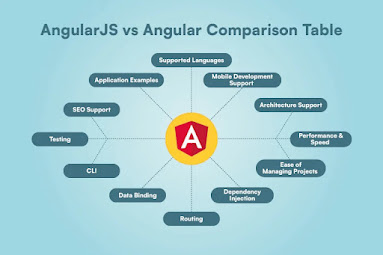Understanding the Key differences: AngularJS vs. Angular
The main function of the AngularJS vs Angular framework is to convert static HTML to dynamic HTML. Because of features like dependency injection and dynamic binding, less code needs to be written than would otherwise be necessary.
Although Angular is a JS-based framework, its primary programming language is typescript, which has all of JS's functionality plus some more.
The extensive feature set of the AngularJS framework:
1. MVC: To put it
simply, an architecture is a software pattern applied to the development of an
application. Mostly, it consists of the following components.
Typescript usage: While AngularJS makes use of JavaScript, Angular (2 and subsequent versions) leverages Typescript in its development process.
Component-based Architecture: Directives are utilized similarly to components in the component-based architecture used by Angular.
Comparison of AngularJS and Angular:- Support for mobile development Angular applications stand out due to their compatibility with mobile devices. Mobile-friendly applications do not use AngularJS.
- Architecture assistance Components are the foundation of most of Agular’s architecture. Also, a combination of templates and directives make up its components.
- Injection of dependency that’s why Angular uses hierarchical dependency injection to speed up applications.
- You may route between several views (templates) with Angular routing. It uses what appears to be a directive-like URL to access the client's view. Routing information can also be defined using AngularJS.
- Binding data with Angular, two-way binding is supported. It enables data binding between the view and the model using () or [].
.jpg)



Comments
Post a Comment